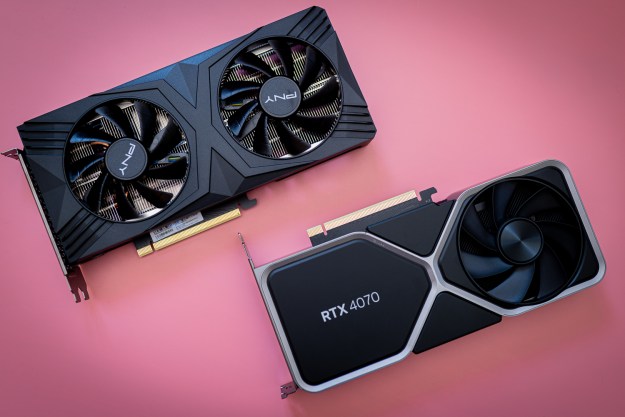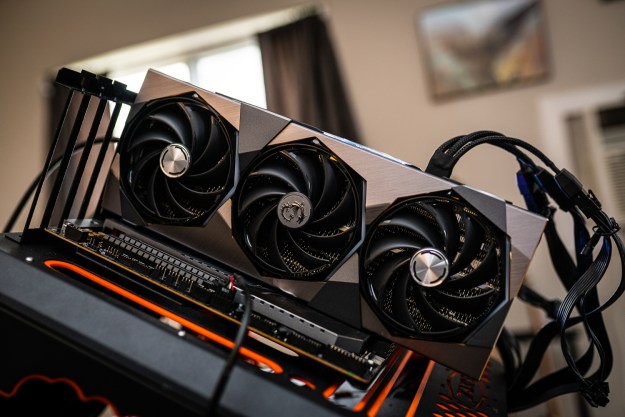The next generation of gaming is upon us, and before the year’s end, there will be plenty of options with potent power for gamers to choose from. After Nvidia had unveiled its latest — and most powerful consumer graphics card to date — GeForce RTX 3080 GPU, the conversation has turned into a battle between PC gaming and console gaming.
Though we don’t know all the details yet, it’s an area where rival AMD will dominate with its silicon on Microsoft’s Xbox Series X and Sony’s PlayStation 5.
For the first time, all these products will come with support for real-time ray tracing for richer, more detailed graphics and support for high-resolution, high refresh rate gaming. So, which should you get?
Pricing and availability

If you look at pricing alone, console gaming delivers more value. Both the flagship Xbox Series X and PlayStation 5 are expected to cost $499 at launch, while Nvidia announced that its flagship GeForce RTX 3080 alone costs $699.
While a $200 premium may not sound like much, gamers must consider that with a console, you’re getting an entire system — complete with gaming controllers — that you can start playing right away. On the other hand, although PC gaming promises to deliver substantially more power, the $699 outlay will only net you a graphics card. You’ll have to factor in the cost of a CPU, memory, storage, power supply, cooling solutions, a case, and other peripherals and accessories before you can actually start to game. These costs add up, and a high-performance rig can end up costing as much as a used car.
Fortunately, if you haven’t made up your mind on which route you’ll be taking, you still have some time to decide. The RTX 3080 GPU launches September 17, while both consoles will be arriving before the year is up. Microsoft recently announced that the Series X is coming on November 10.
Performance
| GeForce RTX 3080 | Xbox Series X | PlayStation 5 | |
| GPU architecture | Discrete Ampere graphics | Integrated RDNA 2 | Integrated RDNA 2 |
| GPU Clock | 1710 MHz | 1825 MHz | 2333 MHz |
| Memory | 10GB GDDR6X | 10GB GDDR6 | 16GB GDDR 6 |
| Memory bus | 320 bit | 320 bit | 256 bit |
| Bandwidth | 760 GBps | 560 GBps | 448 GBps |
| TDP | 320W | 200W | 180W |
| Shading units | 8704 | 3328 | 2304 |
| Compute units | 68 | 52 | 36 |
| ROPs | 96 | 80 | 64 |
| TMUs | 272 | 208 | 144 |
| RT cores | 68 | unknown | unknown |
| Tensor cores | 272 | unknown | unknown |
| TFLOPs | 29.7 | 12 | 10.2 |
| Transistors (millions) | 28,000 | 15,300 | unknown |
| Pricing | $699 | $499 | $499 |
Taking a look at raw performance, the GeForce RTX 3080 makes it the uncontested champion, with nearly three times the computational power of its next closest rival. Nvidia claimed that the RTX 3080 is capable of 29.7 TFLOPs, compared to the 12 TFLOPs on the Xbox Series X and 10.2 PlayStation 5.
To achieve this level of performance Nvidia boasted 50% more CUDA cores, thanks to the more compact 8nm Ampere microarchitecture compared to the prior generation 12nm design used on Turing. To further boost performance, Nvidia is also cramming in more ray tracing and Tensor cores to the card, along with faster GDDR6X memory, and adding support for RTX I/O to improve game loading times.
All these improvements give the Ampere-powered RTX 3080 twice the performance of the previous generation Turing-based RTX 2080, according to Nvidia. In our testing, we found that the RTX 3080 readily outperformed the RTX 2080 Ti by 23% in Assassin’s Creed Odyssey and 22% in Battlefield V when playing both games at 4K with the highest game settings available. Our results show that Nvidia’s claims of 4K gaming at 60 fps will become the new reality for PC gamers. It’s unclear what metrics Nvidia used to arrive at the 2x performance uplift when compared to the prior generation card.

Comparing performance of the RTX 3080 to the AMD-made custom silicon for consoles, with 8,704 shader units on the RTX 3080, Nvidia packed in nearly four times what’s available on the PlayStation 5. For reference, the Xbox Series X and the PlayStation 5 each come with 3,328 and 2,304 shader units, respectively. All three products will support raytracing this year. Given the differences in microarchitecture design — the RTX 3080 uses Nvidia’s Ampere design, while the consoles are based on AMD’s RDNA 2 graphics — we can’t make a direct correlation as to how these numbers will affect real-world performance at this time until we’ve tested both consoles.
There are other notable differences between Nvidia’s GPU and the consoles that it will compete against. Though it has the same 10GB of video memory as the Xbox Series X, the RTX 3080 is the only one of the three to come with the newer and faster GDDR6X memory standard. The two consoles will rely on the GDDR6 non-X memory, though the PlayStation 5 will ship with 16GB. Because it uses faster memory and has a wider 320-bit memory bus — compared to just 256 bit on the PlayStation 5 — the RTX 3080 also has more memory bandwidth, coming in at 760 GBps as opposed to 560 GBps on the Xbox and 448 GBps on the PlayStation.
Another major difference is that the RTX 3080 is a discrete graphics solution that’s meant to be paired with a powerful processor for extreme performance. On the other hand, the semi-custom silicon inside the consoles are built by AMD to be APUs, meaning that the GPU is integrated with the processor for better power consumption and efficiency.
Being built to maximize performance means that the RTX 3080 will consume more power. This graphics card has a TDP of 320 watts, while the Xbox and PlayStation both have a TDP of approximately 200 watts. With a PC expected to draw more power as a whole, PC gamers should expect to install a power supply of no less than 750 watts to keep things running.
In terms of raw performance, all three products are expected to deliver huge performance uplifts compared to their predecessors. Nvidia CEO Jensen Huang promised that the RTX 3080 delivers twice the performance of the prior generation RTX 2080. It has been reported, though unconfirmed, that Microsoft’s Xbox Series X will deliver the same kind of uplift compared to the Xbox One X. Machine learning, DLSS, and ray tracing are par for the course for all three competitors in 2020, which will help with upscaling graphics and improve performance.
Resolution and frame rates

How you like to play games will also affect your consideration of important technical features when choosing your next PC or console. For example, PC gamers often prefer to game at lower resolutions but with faster refresh rates, and technologies like Nvidia’s G-Sync and AMD’s FreeSync help to deliver a blur-free, stutter-free visual experience with a compatible monitor. Nvidia’s promise of 4K gaming at 60 fps with the RTX 3080 will likely help to push the pixels this year.
Our review of the RTX 3080 on a test PC equipped with an Intel Core i7-10700 processor revealed that Nvidia’s claims held true. Graphics-intensive titles like Assassin’s Creed Odyssey and Battlefield V played above the 60 fps promise at 4K resolution with the highest game settings. Less intensive titles, like Fortnite and Civilization VI, played at significantly higher frame rates in 4K.
On the other hand, console gamers often opt for higher resolutions — up to 4K — and with about 30 FPS. With the new generation of consoles coming, it will be interesting to see how Microsoft and Sony implement technologies like Nvidia’s DLSS to handle upscaling, especially since both consoles are expected to get HDMI 2.1 support. DLSS-like technology has been demoed in the past for both the Xbox Series X and the PlayStation 5.
On the RTX 3080, ray tracing performance is also getting a significant boost this year, but you’ll likely only benefit at lower resolutions — in our testing, we found ray tracing is still a bottleneck at 4K unless you turn on DLSS. Without having tested either consoles, we won’t know how the Xbox and PlayStation 5 will handle ray tracing and DLSS, especially at higher resolutions.

Both Microsoft and Sony teased that it could take frame rates to 120 fps, though 4K at 60 fps seems like the safer route. Sony is also targeting 8K support, which is the same resolution that Nvidia will support on its much beefier RTX 3090 graphics card, but for mainstream audiences, it is promising up to 120 fps at 4K resolution.
Key to getting this level of smooth performance is HDMI 2.1 support, as this specification allows the consoles to tap into auto low-latency mode, or ALLM, and variable refresh rate, or VRR. The new standard offers support for more bandwidth than HDMI 2.0b – up to 48 gigabits per second, or more than double what was available previously. Nvidia’s GPU and both consoles are expected to support HDMI 2.1.
ALLM brings a game-ready mode to help minimize input latency, which can mean more responsive gaming that will appeal to players of first-person shooter games and esports titles. VRR is an adaptive sync technology that will make console gaming more competitive with PC gamers who can tap into G-Sync or FreeSync. Coupled with quick frame transport and quick media switching, latency and ghosting should be minimized on screen. Unfortunately, you’ll need a new television set that supports HDMI 2.1 to take advantage of these new features.
Even if all three solutions debut with 4K resolution and 60 fps support, the varied implementation could lead to differing results, and we’ll have to wait until all three are released to make the verdict.
Games

Studying technical specifications while gauging game performance is one thing, but actually playing the games is a whole other animal. Fancy gaming features don’t even factor into your gameplay experience if the game in question isn’t compatible with the platform you use. That’s why Microsoft and Sony prefer to release games exclusive to their platform. Consequently, it’s in your best interest to investigate which games you can play on each system to make an informed decision on which system you’ll enjoy most.
Each system has its specific streaming service options, along with a la cart games. Microsoft’s Game Pass provides a repertoire of more than one hundred games supported by the system and the versatility to play any game on your computer or console. Playstation Now by Sony lets you play PS2, PS3, and PS4 games using DualShock controllers on a current console or PC. PC gamers have access to more features, and the PC’s open configuration allows connectivity to hardware like AR glasses, VR, and much more.
Each of these three platforms offers speedy loading times, so you can start playing quickly, regardless of which one you choose. Current technology has diminished loading times down to almost nothing. Nvidia’s RTX I/O, for example, taps into Microsoft’s DirectStorage on Windows, directly communicating with the server – that speeds up the loading process exponentially. Both PlayStation and Xbox through the Series X Velocity system will also be sporting this feature soon.
Editors' Recommendations
- Nvidia RTX 50-series graphics cards: news, release date, price, and more
- Nvidia’s RTX 4060 might not be such a disappointment after all
- Nvidia’s RTX 4060 might arrive sooner than expected
- Nvidia’s RTX 4060 Ti may be more affordable, but will it be a good value?
- The Nvidia RTX 4070 is still selling for list price. Here’s where to buy it



